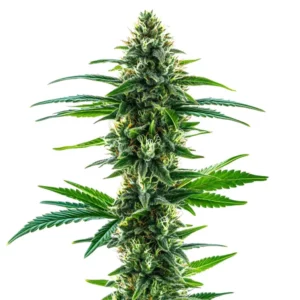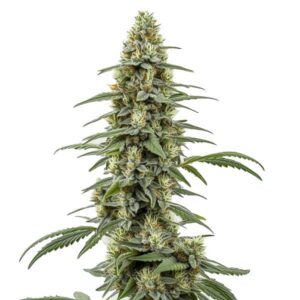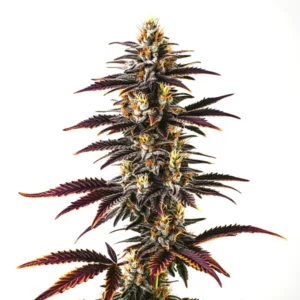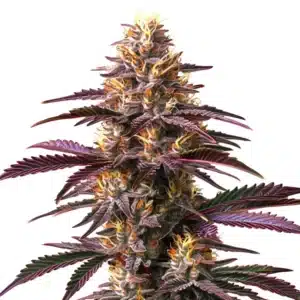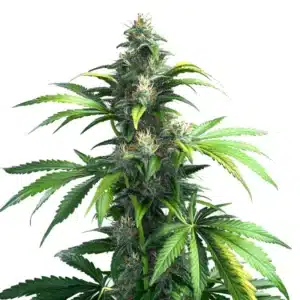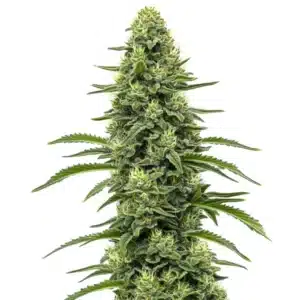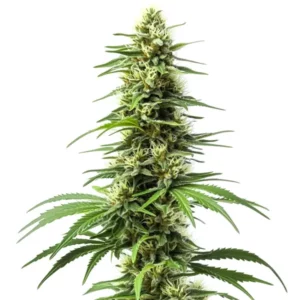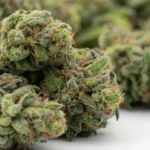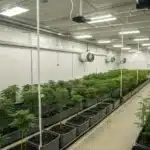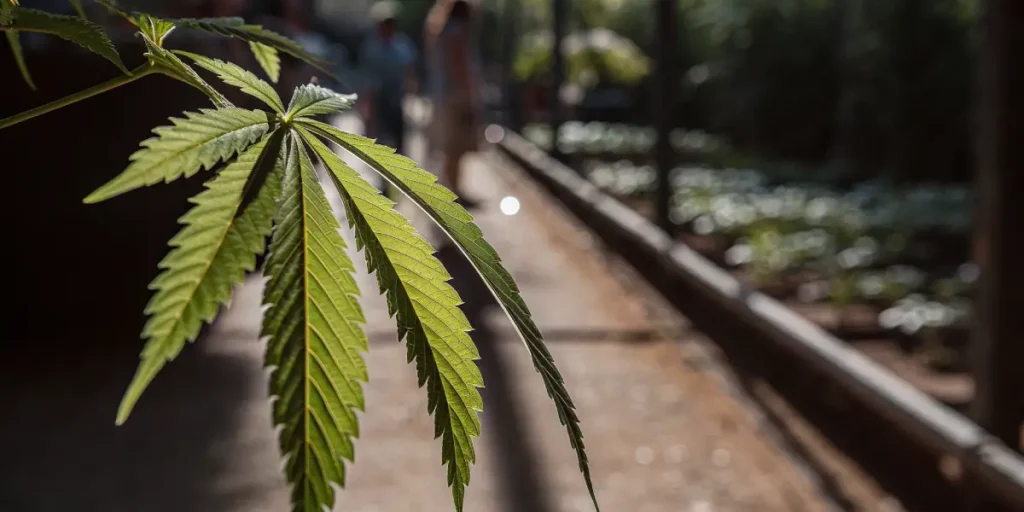
How Temperature Influences Transpiration in Marijuana
Temperature plays a vital role in the life of marijuana plants. When we talk about how temperature influences transpiration in marijuana, we’re looking at how heat and cold affect the plant’s ability to move water from roots to leaves. This process is crucial for growth and overall health.
Transpiration is like the plant’s way of breathing. When temperatures are optimal, marijuana plants thrive. But when temperatures swing too high or too low, it can throw a wrench into the works. Striking the right balance is key for any grower, whether you’re a novice or a seasoned pro.
Recommended Strains
CBD Critical Mass (1:1)
|
|
CBD | 5% (Low) |
|
|
Type | CBD Feminized |
|
|
Yield | Medium |
|
|
Phenotype | 60% Indica / 40% Sativa |
Gelato
|
|
THC | 27% (High) |
|
|
Type | Feminized |
|
|
Yield | High |
|
|
Phenotype | 50% Indica / 50% Sativa |
Choosing the right marijuana strain can make all the difference. For instance, strains like CBD Critical Mass from Blimburn Seeds thrive in specific temperature ranges, making them ideal for growers looking to control transpiration rates effectively.
Optimal Temperature for Marijuana Transpiration
The optimal temperature for marijuana transpiration lies between 70°F and 85°F. Within this range, marijuana plants can efficiently pull water from the soil, through the roots, and up to the leaves where it evaporates into the air. This process helps cool the plant and facilitates nutrient uptake.
Maintaining this temperature range can lead to better growth rates and healthier plants. For instance, the Gelato strain is particularly known for its robust growth under these optimal conditions. Consistent temperatures also reduce stress on the plant, keeping diseases and pests at bay.
Knowing how temperature influences transpiration in marijuana is crucial for achieving optimal growth. By maintaining the right temperature, growers can ensure that their plants absorb nutrients efficiently and produce high-quality yields. Adjustments to the growing environment, such as installing climate control systems, can help maintain the optimal temperature for marijuana transpiration.
Furthermore, the relationship between heat and marijuana transpiration rate plays a significant role in determining plant health. As temperatures fluctuate, the rate of transpiration may increase or decrease, affecting water uptake and nutrient absorption. By monitoring temperature closely, growers can prevent stress and ensure that their marijuana plants continue to thrive.
Effects of Low Temperature on Cannabis Transpiration
When temperatures drop below 60°F, the effects of low temperature on cannabis transpiration become evident. The plant’s ability to transpire slows down, leading to reduced water movement and nutrient uptake. This can cause the leaves to yellow and growth to stutter.
Cold conditions can also make marijuana plants more susceptible to mold and mildew. These thrive in damp, cool environments. Strains like Black Demon OG. can withstand cooler temperatures to some extent, but it’s crucial to monitor your grow space closely.
Besides to stunted growth, the effects of low temperature on cannabis transpiration can lead to a weakened defense system within the plant. This makes it more vulnerable to pest infestations and diseases. By keeping temperatures within the optimal range, growers can safeguard their plants against these threats.
Investing in temperature control systems is a proactive step that can mitigate how temperature variations affect marijuana plant transpiration. Simple solutions such as insulating the grow space or using thermal blankets can effectively maintain consistent temperatures, ensuring that plants remain healthy and productive.
Promos & Deals
Impact of High Temperature on Cannabis Transpiration Efficiency
High temperatures, above 85°F, can reduce cannabis transpiration efficiency. When it’s too hot, the plant loses water too quickly, which can lead to dehydration and nutrient deficiencies. Leaves may curl, and the plant can even wilt if the heat stress is severe.
Managing heat is crucial. Installing fans, using air conditioning, or even placing ice packs around your grow area can help. This ensures that the relationship between heat and marijuana transpiration rate remains balanced, allowing your plants to thrive.
When temperatures soar, the impact of high temperature on cannabis transpiration efficiency becomes more pronounced. Plants may enter a state of shock, halting growth and potentially leading to irreversible damage. By actively managing heat, growers can prevent these adverse effects and promote a stable growing environment.
Knowing how temperature influences transpiration in marijuana is key to maintaining the delicate balance needed for healthy plant growth. By taking steps to regulate temperature, such as integrating automated climate control systems, growers can protect their plants from the detrimental effects of excessive heat.
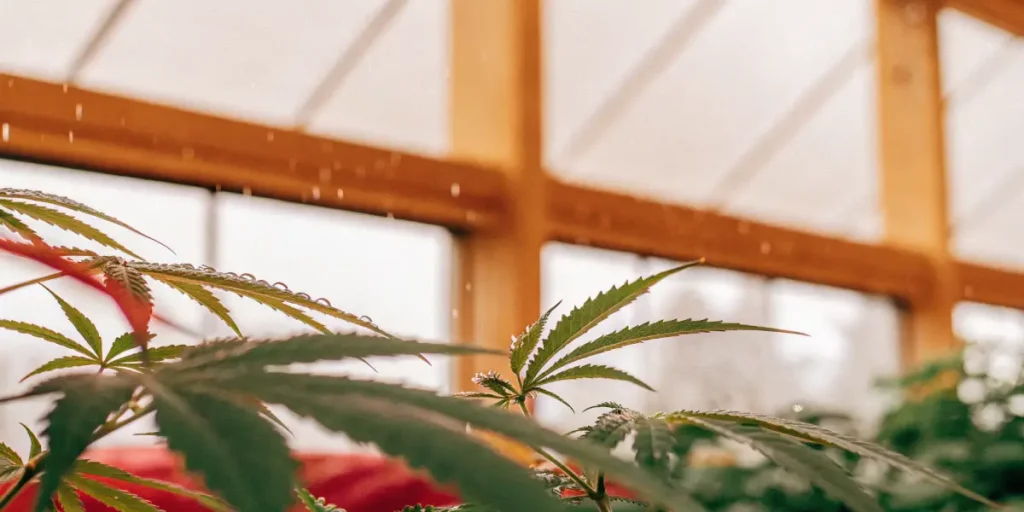
Practical Tips for Managing Temperature
- Use thermometers to monitor grow space temperature regularly.
- Run exhaust fans to reduce heat, especially during summer months.
- Consider LED lighting, which emits less heat than traditional HPS lights.
Adjusting your grow environment can be simple and cost-effective. For example, using reflective materials can help distribute light and heat more evenly. This can improve the overall efficiency of your grow operation.
Choosing temperature-resistant strains can also help. The CBD Critical Mass strain is known for its ability to handle fluctuations in temperature, making it a favorite among growers facing variable climates.
Another practical tip is to adjust watering schedules based on temperature changes. During hotter periods, increasing water supply can help compensate for the rapid water loss due to increased transpiration. Similarly, reducing water during cooler periods can prevent overwatering and root rot.
By knowing how temperature variations affect marijuana plant transpiration, growers can make informed decisions about environmental controls. Regularly calibrating thermometers and adjusting equipment settings ensures that the grow space remains within the desired temperature range, promoting optimal plant development.
FAQs
What is the best temperature range for marijuana plant growth?
For optimal growth, marijuana plants prefer a temperature range between 70°F and 85°F. This range ensures that transpiration happens efficiently, allowing the plant to absorb nutrients and grow robustly. When temperatures are kept in this sweet spot, you can expect your marijuana plants to thrive.
Staying within these temperatures also minimizes the risk of pests and diseases. Most cannabis strains, like Gelato, are bred to perform best in these conditions. Monitoring and maintaining this temperature ensures your plants remain healthy and productive.
The optimal temperature for marijuana transpiration not only affects plant growth but also influences the quality of the final product. Maintaining consistent temperatures helps ensure that cannabinoid and terpene profiles are preserved, resulting in a more potent and flavorful yield.
By investing in reliable temperature control systems, growers can maintain the best temperature range for marijuana plant growth. This investment pays off by enhancing plant health and maximizing the potential of each harvest.
How do I know if my marijuana plants are stressed due to temperature?
Signs of temperature stress include wilting, yellowing leaves, and slowed growth. If you notice these symptoms, check your grow area temperature. Plants may also exhibit leaf curling or browning edges when subjected to extreme heat.
Making adjustments like increasing airflow or shading the plants can help alleviate stress. Knowing how temperature influences transpiration in marijuana can guide you in making the right tweaks to your growing environment.
Monitoring plant behavior is crucial for identifying stress early. Regularly inspecting leaves for discoloration or unusual patterns can provide insights into potential temperature issues. Timely intervention can prevent further damage and restore plant vitality.
Utilizing climate monitoring tools can aid in detecting deviations from the optimal temperature for marijuana transpiration. Automated alerts can notify growers of critical temperature changes, allowing for prompt actions to mitigate stress and maintain healthy growth conditions.
Can marijuana survive in cold temperatures?
While marijuana can survive in cooler climates, temperatures below 60°F can slow growth and affect transpiration negatively. The plant may become susceptible to mold and other issues. Strains such as Black Domina OG. may tolerate cold better than others, but keeping temperatures within the optimal range is best.
Using heaters or insulating your grow space can help maintain a stable environment. This ensures your plants continue to transpire efficiently, even when external temperatures drop.
Cold temperatures can significantly hinder the plant’s metabolic processes, leading to reduced energy production and slower development. It is essential to create a buffer against the effects of low temperature on cannabis transpiration to sustain plant health.
Innovative technology, such as smart thermostats and climate control apps, can assist in maintaining a consistent environment. These tools offer precise temperature management, ensuring that marijuana plants remain resilient against the challenges posed by cold weather.
Does temperature affect the potency of marijuana?
Temperature can influence the overall health of the plant, which in turn affects potency. Stressed plants often produce lower yields and may have altered cannabinoid profiles. Maintaining optimal temperatures helps ensure that your plants produce potent buds.
Monitoring how temperature influences transpiration in marijuana is crucial for maintaining quality. Healthy plants not only grow better but also produce the desired effects that growers and consumers seek.
The relationship between heat and marijuana transpiration rate is closely linked to potency. Excessive heat can degrade essential compounds, while optimal conditions preserve them, resulting in a more effective and enjoyable product.
By prioritizing temperature management, growers can safeguard the integrity of their cannabis crops. Ensuring that environmental conditions support robust transpiration leads to higher-quality yields with enhanced potency and aroma.
What tools can help maintain optimal temperature for marijuana growth?
Several tools can help you maintain the right temperature. Thermometers and hygrometers are essential for monitoring. Exhaust fans and air conditioners can help control heat, while heaters may be necessary for colder environments.
Grow lights also play a role in temperature management. LED lights are energy-efficient and produce less heat, making them a good choice for maintaining an optimal temperature for marijuana transpiration.
Investing in smart environmental controllers enables precise regulation of both temperature and humidity levels. These devices can automate adjustments, ensuring that the grow space remains within the optimal range for marijuana transpiration and overall plant health.
Additionally, incorporating energy-efficient insulation materials can provide a cost-effective solution for maintaining consistent temperatures. This not only supports plant growth but also reduces operational costs, allowing for more sustainable cultivation practices.




